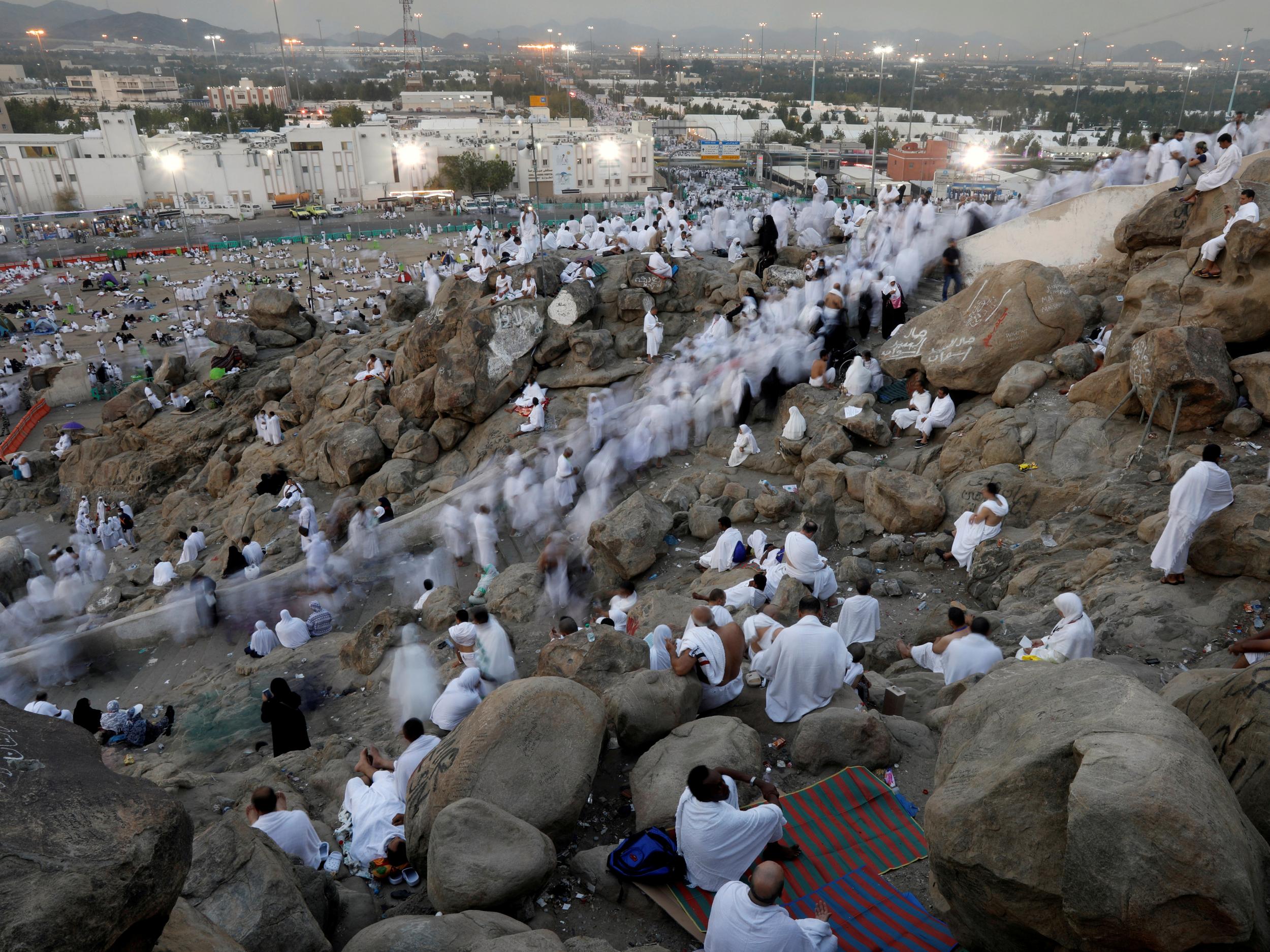Hajj 2017: Two million Muslims gather at Mount Arafat for holy festival’s most important day
Worshippers follow in footsteps of prophets Ibrahim and Ismail to ask for forgiveness and guidance in their daily lives

Your support helps us to tell the story
From reproductive rights to climate change to Big Tech, The Independent is on the ground when the story is developing. Whether it's investigating the financials of Elon Musk's pro-Trump PAC or producing our latest documentary, 'The A Word', which shines a light on the American women fighting for reproductive rights, we know how important it is to parse out the facts from the messaging.
At such a critical moment in US history, we need reporters on the ground. Your donation allows us to keep sending journalists to speak to both sides of the story.
The Independent is trusted by Americans across the entire political spectrum. And unlike many other quality news outlets, we choose not to lock Americans out of our reporting and analysis with paywalls. We believe quality journalism should be available to everyone, paid for by those who can afford it.
Your support makes all the difference.With their palms facing the sky in supplication, and many with tears in their eyes, around two million people from around the world have gathered in an effort to start anew, erase past sins and beg God for forgiveness and guidance in the peak day of the hajj pilgrimage.
From dawn until dusk, the massive crowd of people will be gathered here in Mount Arafat to spend the day in supplication and contemplation. It is here, on this mountain surrounded by desert, where the Prophet Muhammad delivered his final sermon more than 1,400 years ago.
“We hope that Allah will forgive our sins, and we hope to have a new start with our God,” said Khaled Ahmed, a 47-year-old pilgrim from Egypt.
In his sermon, the prophet called on his followers to repay their debts, beware of Satan, perform five daily prayers, fast during the month of Ramadan and give to charity. He also called on those with the means to perform the hajj once in a lifetime. He also reminded worshippers of the rights that women have, and said that no ethnic group or race has superiority over another except in piety and good action.
During the hajj, pilgrims are expected to shed symbols of materialism, though the trip itself can be quite expensive for most. Male pilgrims are required to wear seamless, white terrycloth garments for the entirety of the hajj. Women wear loose clothing, cover their hair and forgo makeup and nail polish to achieve a state of humility and spiritual purity.
The large crowds gathered from more than 160 countries around the world, dressed in nearly identical white garments, are meant to symbolise unity among Muslims, humility and equality before God. The rich and poor among men are to dress the same while performing the rites of hajj.
The hajj is required of all Muslims once in a lifetime. The physically demanding journey tests pilgrims' patience as they withstand long waits and thick crowds on their path to achieving spiritual purification and repentance.
Noura Sulieman, a pilgrim from the Philippines, said she'd been to the hajj many times before and was here again to pray for her family.
“I came here to Arafat to pray for my family, for my daughter, and my son, and all my family, and all the Philippines Muslims, and all Muslims in all countries,” she said. “God willing, Allah will accept our pilgrimage.”
Muslims believe the rites trace the footsteps of the prophets Ibrahim and Ismail — Abraham and Ishmael in the Bible.
The movement of such a large and diverse crowd of people in a short period of time in limited spaces is a logistical challenge for the Saudi government. Authorities have deployed more than 100,000 security forces to secure the hajj and assist pilgrims. Additional doctors, nurses, ambulances and mobile health centres are also deployed in the areas of hajj.
Many begin their pilgrimage by travelling to Medina, the site of both the Prophet Muhammad's first mosque and where he is buried.
The rites of the hajj, however, begin in Mecca, the site of Islam's holiest place of worship. There, pilgrims circulate the cube-shaped Kaaba and kneel in prayer facing it. The Kaaba represents the metaphorical house of God and the oneness of God in Islam. Observant Muslims around the world face toward the Kaaba during the five daily prayers.
After Mecca, pilgrims spend the day in Mount Arafat before heading to an area called Muzdalifa. There, they will pick up pebbles for a symbolic stoning of the devil and a casting away of sins that takes place in the Mina valley for three days.
Male pilgrims will shave their hair and women will cut a lock of hair in a sign of renewal for completing the hajj. Around the world, Muslims will mark the end of hajj with a celebration called Eid al-Adha.
AP
Join our commenting forum
Join thought-provoking conversations, follow other Independent readers and see their replies
Comments